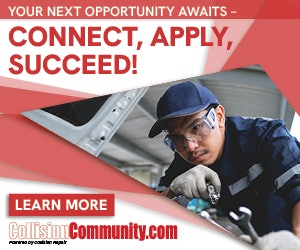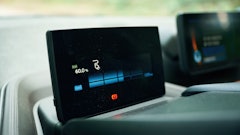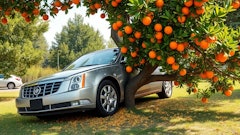
Magna International is getting into the self-driving race with the introduction of MAX4, its new autonomous driving platform. According to a statement from Magna, the new system will offer fully autonomous driving combining cameras, LiDAR and ultrasonic sensors and a computing platform that are integrated into the car's body.
By Jeff Sanford
Toronto, Ontario — September 3, 2017 — In this week’s Autonomous Report we look at how parts giant Magna has joined the autonomous vehicle (AV) race, collision avoidance systems show their worth for drivers, Hollywood’s next big market, and much, much more!
– It looks like Torontonians will soon have groceries delivered by AV. Massive online retailer Amazon recently got into food distribution when the company bought up grocery chain Whole Foods. Following up on that announcement last week, Amazon has announced it is working with Uber to develop automated vehicles (AVs) to deliver groceries. And now this past week word emerged that Amazon will begin grocery deliveries in Toronto in a bid to make a trip to the grocery store a thing of the past. The service promises a two-hour window for deliveries. The food will come from Toronto-area Whole Foods stores.
– Research confirms what many have suspected: The new AV-like safety systems on cars that prevent lane drift and provide blind spot warnings are reducing the number of accidents. Two studies released last week found that, “… lane-keeping systems, some of which even nudge the vehicle back into its lane for the driver, and blind-spot monitoring systems had lower crash rates than the same vehicles without the systems,” according to a report in the Toronto Star.
The report went on to note that, “The lane-keeping study looked at police crash data from 25 states between 2009 and 2015 for vehicle models where the systems were sold as optional. Lane-keeping systems lowered rates of single-vehicle, side-swipe and head-on crashes of all severities by 11 percent, and crashes of those types in which there were injuries, by 21 percent …” The analysts involved in the study calculated that,
“If all passenger vehicles had been equipped with lane departure warning systems in 2015, an estimated 85,000 police-reported crashes would have been prevented …”
Of course, as with any new safety system, there’s a good chance its presence in a vehicle makes drivers lax. Greg Brannon, the Automobile Association of America’s Director of Automotive Engineering said it’s, “… critical that drivers understand the capabilities and, more importantly, the limitations of the safety technology in their vehicle before getting behind the wheel.” While some crashes have been reduced in number there are also worries that, “For all the promise technologies hold to enhance safety, researchers are also concerned that they are changing driver behaviour.”
– Auto supplier Magna International on Thursday announced its AV strategy. The Ontario-headquartered auto parts giant is getting on the AV train. The company announced it is coming out with a system that will provide automation without the bulky rooftop sensors that have been seen on many early AVs. Early LiDAR units have had an unfortunate resemblance to an upside down bucket of takeout chicken. Magna is having none of that bulky look. In a statement the company said its Max4 system is designed to provide, “… fully autonomous driving combining cameras, LiDAR and ultrasonic sensors and a computing platform that are integrated into the car’s body.”
The company claims parts of the system are either production ready or nearly production ready. The Max4 system will be designed so that, “… drivers can turn on the autonomous driving function using a button, and turn it off as they do cruise control by either tapping the brake or hitting a button,” according to a report by Reuters. Part of this strategy involves the acquisition of Innoviz Technologies.
The company provides a solid-state LiDAR technology that enhances Magna’s “Level 3/4/5 autonomous driving sensor solutions.” AVs are rated on a 1-to-5 scale, with 5 being a full self-driving car. You can check out a video on the system in the player below.
– A popular chain of Canadian movie theatres offered half price tickets this past August. It seems there were so few people shuffling through movie theatres this summer that a discount was necessary to attract customers. This summer also saw a weekend pass in which there was no new movie released. This is the first time that has happened in years. As digital companies like Netflix continue to shift consumer habits, it seems the film industry is not what it once was.
An interesting story appeared in the move industry trade publication the Hollywood Reporter this past week speculating about the big opportunities to be had in relation to in-vehicle entertainment for passengers of AVs. Could driverless cars be just the thing to restore some magic to the movie industry? According to the Reporter story this exactly what’s going to happen as the windshield becomes “… the movie screen of tomorrow.”
With AVs taking care of driving passengers are going to have lots of time to sit around and take in media products. According to the piece, “Our mobile lifestyle is expanding into cars — that is the next journey for entertainment. Hollywood is an important part of that discussion,” said Ted Schilowitz, a “futurist” employed by Paramount Pictures. He points out that while, “… passengers will continue to use personal mobile devices, a self-driving car could deliver a more sophisticated offering of movies, TV and games as well as emerging platforms such as virtual, augmented and mixed reality. In a driverless car, ‘there’s a lot of real estate.’ If you look at the windshield and windows, they are ‘screens’ at the right distance to be entertainment portals. Can the windshield be the movie screen of tomorrow?”
Alex Hilliger, an engineer at Mercedes-Benz Research & Development North America, was quoted as saying, “We’re re-envisioning the automotive experience. The vehicle could have a lounge atmosphere, and the passengers face forward or backward. If you don’t need a steering wheel or driver’s seat, the car can be a new space.”
The story goes on to say that, “Viewing a movie that has been edited and packaged for in-car consumption is only the tip of the iceberg: Think content customization prompted by facial, voice and gesture recognition.”
Danny Shapiro, Senior director of Automotive at tech developer Nvidia, was also quoted in the story. Nvidia is the chipmaker providing the tools for the AV revolution. The company enjoyed single largest price appreciation of any publicly stock last year with a more than 400 percent return on its shares.
According to Shapiro, “Artificial intelligence will be permeating every aspect, from monitoring what’s going on outside the vehicle — making sure the road is clear and safe — to a robust in-car AI system that recognizes who is in the car via facial recognition … The content personalization possibilities are endless and will be based on a voice-activated and gesture-based system. The telcos (telephone companies – Ed.), content providers, game developers and e-commerce companies will be transacting business within the car. We’ll also see new types of interfaces — we can even turn the whole interior of the car into a holodeck.” We live in interesting times.























